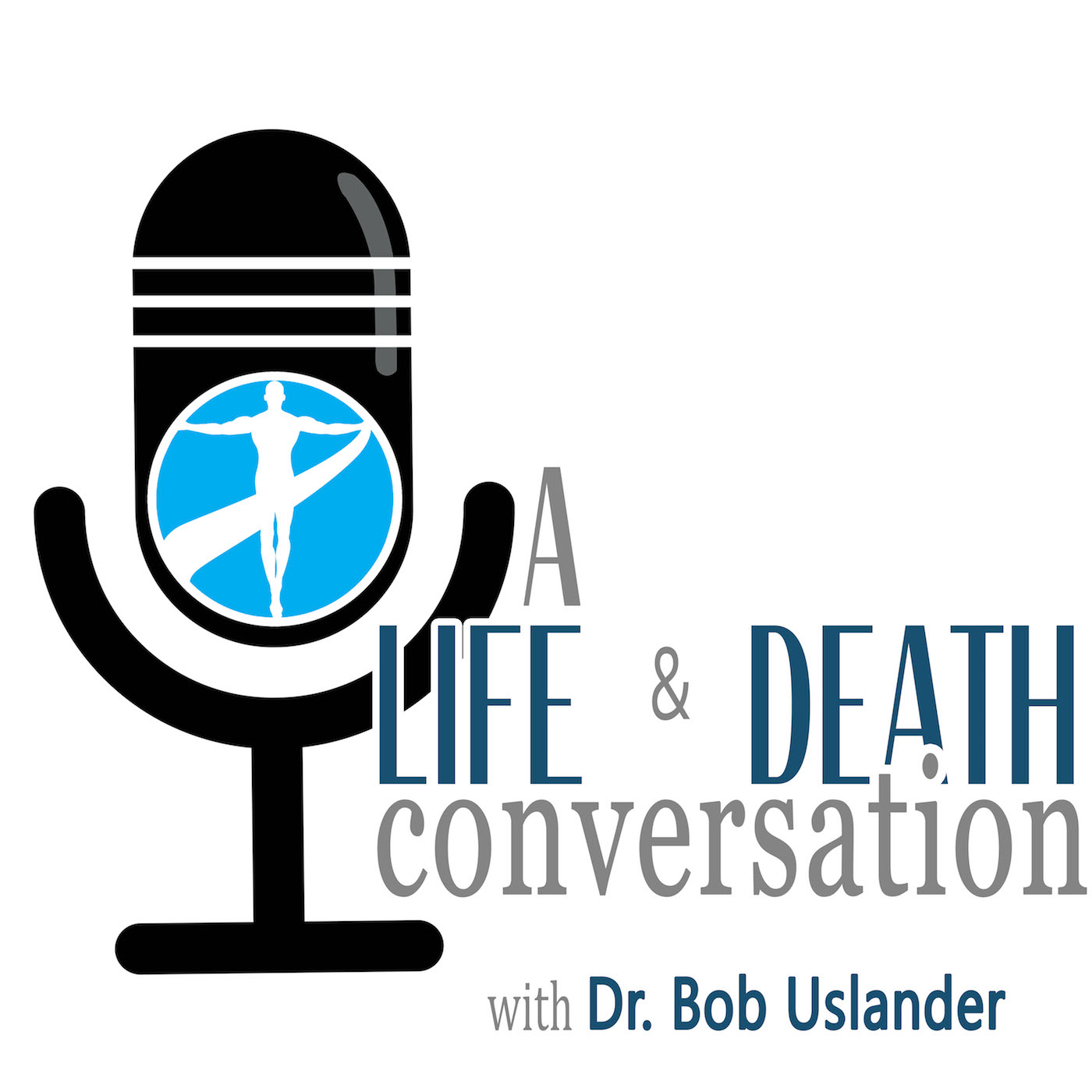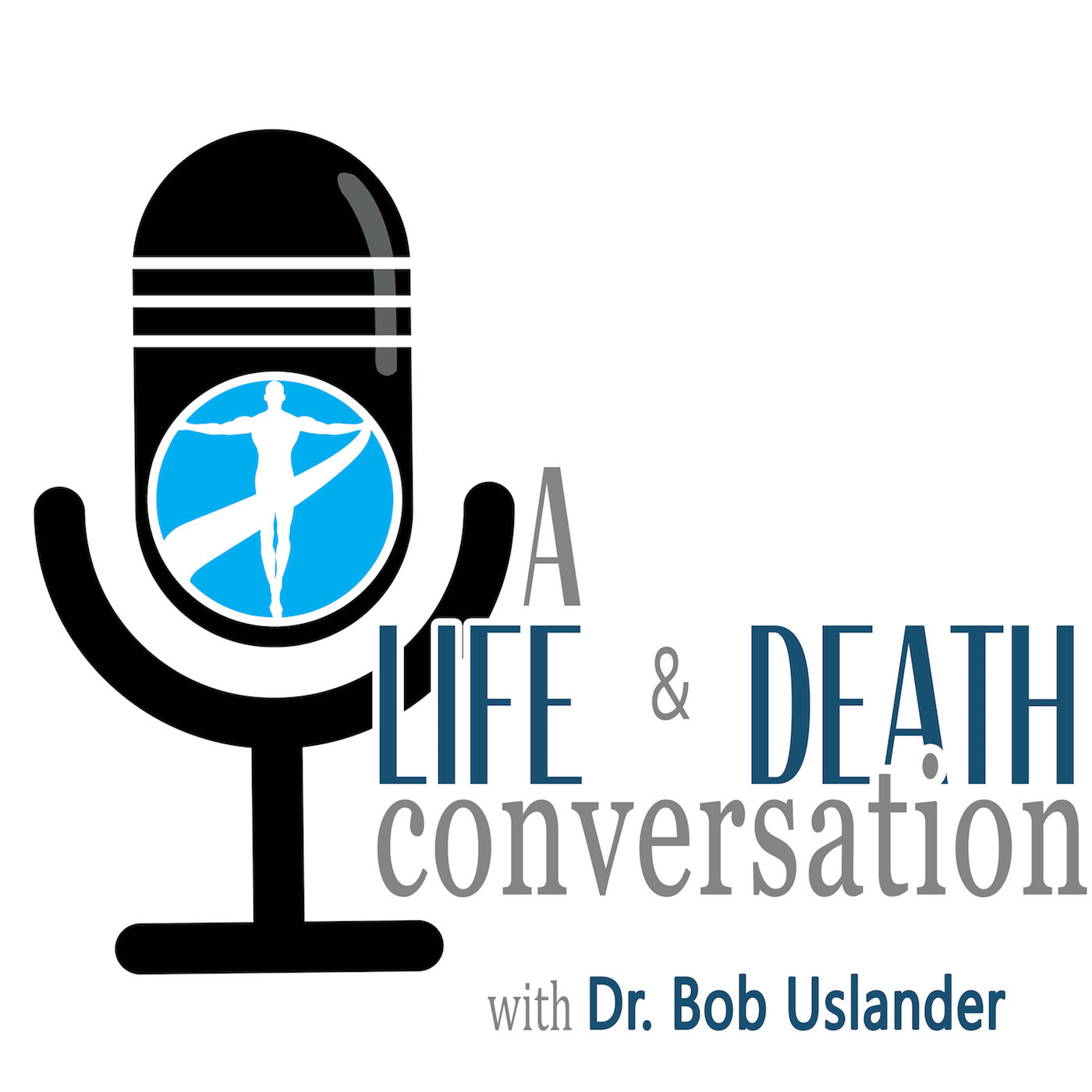What Death With Dignity Means to You and Your Loved Ones
Update: 2018-08-17
Description
For decades Kathryn Tucker has been supporting people's rights to have a peaceful and dignified death. She's fought to protect the medical aid in dying laws. Listen to learn more about the End of Life Liberty Project. Note: A Life and Death Conversation is produced for the ear. The optimal experience will come from listening to it. We provide the transcript as a way to easily navigate to a particular section and for those who would like to follow along using the text. We strongly encourage you to listen to the audio which allows you to hear the full emotional impact of the show. A combination of speech recognition software and human transcribers generates transcripts which may contain errors. The corresponding audio should be checked before quoting in print. Contact End of Life Liberty Project Dr. Bob: Katheryn Tucker is an attorney who's dedicated almost 30 years to supporting the right of individuals to have a peaceful and dignified death in a manner that's consistent with their values. In this work, and in this effort, she and I are very aligned. She helped initiate and protect the medical aid in dying laws in Oregon and Washington State as well as California, and has continued to be a fierce advocate for this right on a state and national level. Katheryn's a graduate of Georgetown University Law School, and she's currently serving as the executive director of the End Of Life Liberty Project, which is now based at the UCSF/UC Hastings Consortium on law, science and health policy. Katheryn is recognized as a national leader in spearheading creative and effective efforts to promote improved care for people who are seriously ill and dying. And on this episode, Katheryn is discussing her passion for supporting and protecting people's right to a peaceful and dignified death. As well as her views on the current laws in place in certain states that allow terminally ill people to access physician aid in dying or otherwise known as death with dignity. I personally found this conversation to be highly informative, a bit provocative and incredibly interesting. I hope you do too. Well. Katheryn, I am so happy to have this conversation with you. And I really appreciate you taking time. I know you're a busy lady, and involved in lots of important things. So, again, thanks for sharing your time and your expertise with my listeners. Kathryn Tucker: Well, thank you for having me. My pleasure. Dr. Bob: Yeah. I feel like we have so many different things that we could talk about that are important, but I'd like to start out, you're a passionate advocate for people having the most peaceful, dignified end of life as am I. We have we approach it from different angles, but with the same kind of general mission, which is to allow people to be self-determining and have more control. You've been doing this for a long time, how did you become such a passionate advocate for this? Kathryn Tucker: I started doing this work when I was a brand new lawyer back in 1990, and I was the outside counsel to the first initiative campaign in the country to put before voters the question of whether dying patients should be able to receive physician assistants in dying. So, my work started that year with that campaign. I did become passionate about empowering patients with information and choices as a civil liberty, and one of the most profoundly personal decisions a person can make in a lifetime. Dr. Bob: So, was this something that you ... Is this a direction that you chose at that time back in 1990, or did it just fall into your purview based on where you were working and what you were doing? Kathryn Tucker: I was a young lawyer in a big law firm in Seattle, Perkins Cooley that supported its lawyers taking on pro bono work. So, I actually was casting about for some public interest work and came upon the campaign, Washington Citizens For Death With Dignity, and just volunteered to provide some legal support. Right at that moment, the initiative was being drafted. So, I got involved with that drafting. Then we had a long campaign that involved the defense of the ballot title in court, that's the words that the voters will see when they go to make their vote and is very important to the outcome of the vote. So, we had litigation about that. We had litigation around false political advertising because some of the claims that were being made about what the law would allow were so outrageously wrong that we challenged those in court. So, it turned out to be a year and a half working to get this in front of the voters. And it very nearly passed even though it was quite a broad measure, much broader than what was passed in Oregon a few years later. So, my work on that then rolled forward into doing some work on the Oregon Effort in 1994. But also the orchestrating of two federal lawsuits that were seeking to have the federal courts and ultimately the United States Supreme Court recognize that the choice of a dying patient for a more peaceful death with physician assistants was an interest that should be protected by provisions of the United States Constitution. So, that work then got underway, and 25 years later I'm still doing this role. Dr. Bob: You're still doing that. Do you ever wonder what would have happened if you never were asked to participate in that back in 1990- Kathryn Tucker: It would probably have been a less interesting and satisfying career. I think that this question which is that the intersection of law, medicine, bioethics is very fascinating, and there are so many perspectives and so many complexities that 25 years later it says interesting as it was when I first got started. So, I'm very grateful and privileged to be able to do this work.Dr. Bob: I completely get that. This work has been part of my life only for the past couple of years since the end of Life Option Act passed in California, but it's so complex, and it makes me feel so, I guess, alive and invigorated to be able to provide such a high level of support at such an incredible and vulnerable and intense time in people's lives. Kathryn Tucker: Right, absolutely. Dr. Bob: So, I commend you, and you're partly responsible for what's transpired and what's now allowing people to have this kind of control and peace. And so I thank you for all the efforts that you've put in. I know that you've gone way above and beyond, you've created a nonprofit to additionally provide support. So, 25 years after you began, what are you currently focusing your energy and attention on right now? Kathryn Tucker: Well, one of the things that I constantly try to do is have some perspective on whether the efforts that we have been engaging to expand end of life liberty are actually achieving that. My current view is that while the work we did with the Oregon Death With Dignity [inaudible 00:07:50 ] which became the first statute to permitted and dying, enacted by voter initiative in 1994 by the Oregon voters. But then subsequently followed in many other states that have essentially what's referred to as the Oregon model. Which is a very heavy-handed government regulation of the practice of medicine with regard to aid and dying. That very heavy-handed government regulation may have been appropriate and necessary in 1994 when no state had an open practice of aid and dying. And there were many unanswered questions about how an open practice would impact patients and the practice of medicine. So, the Oregon enactment was designed first to actually be able to run the gauntlet of the political process. So, it needed to have a tremendous number of what are referred to as safeguards. You'll recall that the Oregon measure followed a failed attempt in Washington State in '91, and then a failed attempt in California in '92. So, by the time we were working in Oregon in '94, it was the kitchen sink approach to protection, regulation and safeguard so that the contentions of opponents that this would be dangerous could be effectively combated by showing how many safeguards, in fact, were in place. So, that's the backdrop of why the Oregon measure has the multitude of restrictions, requirements, and constraints that it does. Following Oregon's enactment. Other states adopted virtually the same but in some cases even more burdensome measures. Because at that point they could say well, the Oregon approach has worked well. So, everyone in this forum can feel comfortable voting for this. That's been effective. We saw Washington State and Vermont and Colorado and California and Hawaii adopt what are called Oregon style aid in dying measures. The problem is we're now more than 20 years later; we've got abundant data that shows who chooses aid in dying and why, and how it impacts patients in the practice of medicine. So, we now know a lot more than we knew in the early '90s. I think it's time to move away from the Oregon model because what we have also seen, and a multitude of studies are starting to report is that very heavy-handed government regulation comes at a tremendous cost. It creates barriers to patient access, which I know you've seen in your practice. And it creates tremendous burdens for physicians, which of course you're also aware of, which means few doctors are willing, and patients find difficulty finding doctors, and it's very problematic. So, the advocacy that I am embarking into now is really to move the practice of aid in dying into a standard of care approach, which is how all of medicine is practiced Dr. Bob: Awesome. You are really gifted at articulating all of that, and I think you did a great job of sharing how things got to be as they are today. Could you go a little deeper into what the heavy-handed government regulations you're referring to are? Kathryn Tucker: Sure, and I know you know them very well. Dr. Bob: Right? I want our audience to be aware of wh
Comments
In Channel







